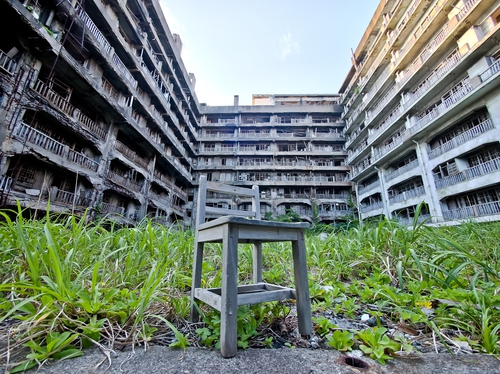Recently I had an article published in the Hiragana Times (on sale in Japan this month) about Haikyo – Japan’s abandoned buildings. The main article is only available in the magazine, but there’s a small summary on the Hiragana Times homepage that makes for some good reading practice for beginners. Enjoy!

日本の廃墟の隠れた美しさ
にほん の はいきょ の かくれた うつくしさ
Hidden Beauty of Japan’s Abandoned Buildings
4がつ ごう の 「にほん ぶんか マニアック」 では、 はいきょ に みりょく を かんじる マイケル・ガクランさん を しょうかい しています。にほん でも はいきょを たんけん する サブカルチャー が あります。
In the April edition of ‘Japanese Culture Vultures’, we introduce Michael Gakuran who is fascinated with Japan’s ruins. There’s also a subculture devoted to exploring abandonments.
**********
It’s interesting to note in the sentence above that「にほん ぶんか マニアック」is translated by the Hiragana Times staff as ‘Japanese Culture Vultures’ rather than the more literal ‘Japanese Culture Maniacs’, presumably because of the negative nuance ‘maniac’ holds.
**********
*ふるい もの の なか に ある かくれた うつくしさを 「さび」 と いいます。 また、かざらない そぼくな うつくしさ を 「わび」 と いいます。ふたつ を あわせて、「わび・さび」 と いいます。
*The beauty found inside old things is known as ‘sabi’. Additionally, unforced, simple beauty is known as ‘wabi’. The two words combine to make the concept of ‘wabi-sabi’.
**********
I talk a little about wabi-sabi and its connection to haikyo in the Hiragana Times article, but keep your eyes peeled on my main site gakuranman.com for a deeper look at the subject in the near future!
If you enjoyed the hiragana reading practice, you can find lots more over at the Hiragana Times blog, and naturally, lots of good reading practice in their monthly magazine.
Leave a Reply